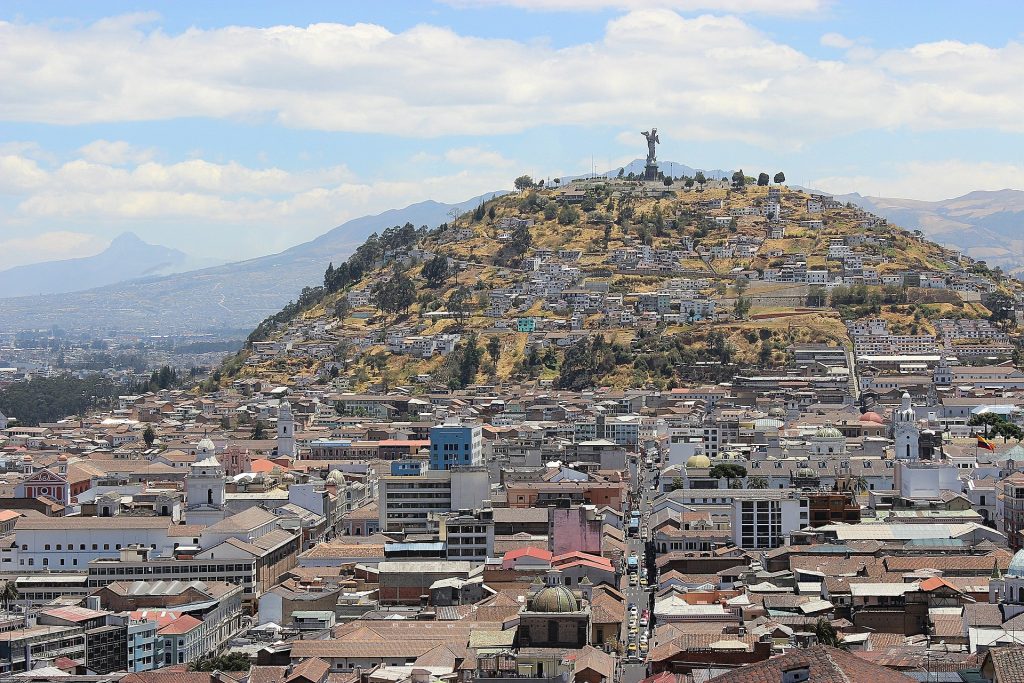We don’t need no governments, we need education (and research): part 2

In the European spring of 2016, I lived in the Ecuadorian capital of Quito for three months. I conducted a research project on the city’s water management and governance for my Master thesis.[1] In my last article on DuurzameStudent[2] I wrote about UN agreements such as COP22 and the Habitat III conference. Along the way, I expressed a preference for more localized and place-specific solutions to reach the UN sustainable development goals. In this follow-up article, I describe the way in which I tried to provide these for Quito.
Door Eric Schreurs
City Blueprint
My thesis was part of a project called the City Blueprint,[3] which aims at mapping a given city’s water management and governance. The research gives a snapshot of the main bottlenecks by assessing indicators such as drinking water quality, wastewater treatment and climate adaptation policies. To provide possible solutions, it looks more to the presence of governance conditions such as sufficient financial resources, awareness among citizens and policy makers and collaboration between stakeholders.
I liked the idea that there was a specific focus on (the comparison of) cities. Already more than half of the world’s population lives in cities, and this figure is rising at a rate of 200,000 people per day.[4] This makes the execution of this kind of research on city level rather relevant. Pressures on urban water resources, capacity of solid waste procession and energy consumption are already high globally and are only likely to rise in the future. It is projected that by 2025, two-thirds of the world population will live in “water-stressed” areas. By 2030, the global need for water will exceed the global supply of water by 40%.[5] Besides that, if there is one area on which climate change is likely to hit humanity hardest, it is water.[6] This, in turn, is related to food security, agriculture, sanitation, hygiene, and therefore human health and well-being. All this does seem to illustrate the importance of projects like City Blueprint.
Quito’s biggest bottlenecks
The most important problems Quito[7] faces as a city are, ironically, not necessarily environmentally related. Of course, there are urgent issues that should be resolved. Examples of which are the absence of wastewater treatment and a system of recycling solid waste, or a water system leakage rate of almost 30%. But the main key for Quito in becoming a sustainable and climate-resilient city is actually to be found in the city’s high drinking water consumption of little over 200 litres per person per day. With an expected doubling of the city’s population in the next 25 to 35 years (from 2.2 million now to around 5 million), securing enough drinking water for the entire urban population can become a major problem in the future.
Besides that, Ecuador has been in a state of economic crisis since 2013. This naturally hampers the financial capacity to resolve water issues and carry out projects. Finally, Quito lacks sufficient parks, forests and water bodies (green and blue areas). This makes it problematic for the city to absorb enough heat from the rather intense equatorial sun into the ground and process the rainwater resulting from extreme weather events.

The way forward
But first and foremost the consumption of drinking water in Quito should become more efficient. Of the several ways to reach this goal, one is to revise the tariff structure. At this point the average water bill of a household in Quito is a few US dollars per month. People do pay more when they consume more, but this only happens if one consumes the monthly equivalent of 333 litres per day. Not a very effective incentive if the average drinking water consumption lies around 200 litres per day. Besides that, since 200 litres per day is an average, residential consumption presumably lies even lower. This is because the root of Quito’s drinking water consumption problem is to be found in the industrial and commercial sectors.[8] It is therefore especially the prices for these categories that should be raised, in order to effectively diminish drinking water consumption in the city.
Another proposed solution is to create more awareness by more active campaigns. These should use different media channels, take place on a regular basis and could also involve water rationing (when water is only available in certain neighbourhoods (or) at certain times of the day). Finally, Quito lacks an inclusive, efficient and transparent climate of inter-organizational cooperation, participation and exchange of knowledge. Until now, instead of meaningfully involving NGO’s, universities and small firms, the city’s water governance has mainly been settled in the political arena. This slows down change and creativity, and brings the focus mainly back to technological aspects of the problem, for which there are almost no financial means.
Change starts with individuals
The fact that drinking water consumption is the main problem in Quito is an interesting conclusion. It indicates that solutions for issues related to climate change are just as easily proposed on the micro-, and not necessarily on the macro-level. Like the choices one makes of which products to buy and which not, the real change starts inside one’s head. It starts with individuals trying to bring back their demand, rather than by ever bigger megaprojects to fulfil this ever growing demand.
[1]file:///C:/Users/Eigenaar/Downloads/Battling%20Future%20Water%20Scarcity%20in%20Quito,%20Ecuador%20-%20Master%20Thesis%20-%20Eric%20Schreurs%20(5768373).pdf.
[2] http://www.duurzamestudent.nl/2017/01/03/we-dont-need-no-governments-we-need-education-and-research/
[3] http://www.eip-water.eu/sites/default/files/E-Brochure%20City%20Blueprint%20(v4).pdf
[4] http://link.springer.com/article/10.1007/s10668-015-9636-z
[5] http://theeconomiccollapseblog.com/archives/30-facts-about-the-coming-water-crisis-that-will-change-the-lives-of-every-person-on-the-planet
[6] https://www.washingtonpost.com/news/energy-environment/wp/2016/05/03/world-bank-the-way-climate-change-is-really-going-to-hurt-us-is-through-water/?utm_term=.737f3d504e42
[7] http://www.eip-water.eu/third-united-nations-conference-housing-and-sustainable-urban-development-17-20-october-2016
[8] http://link.springer.com/article/10.1007/s10668-017-9916-x
